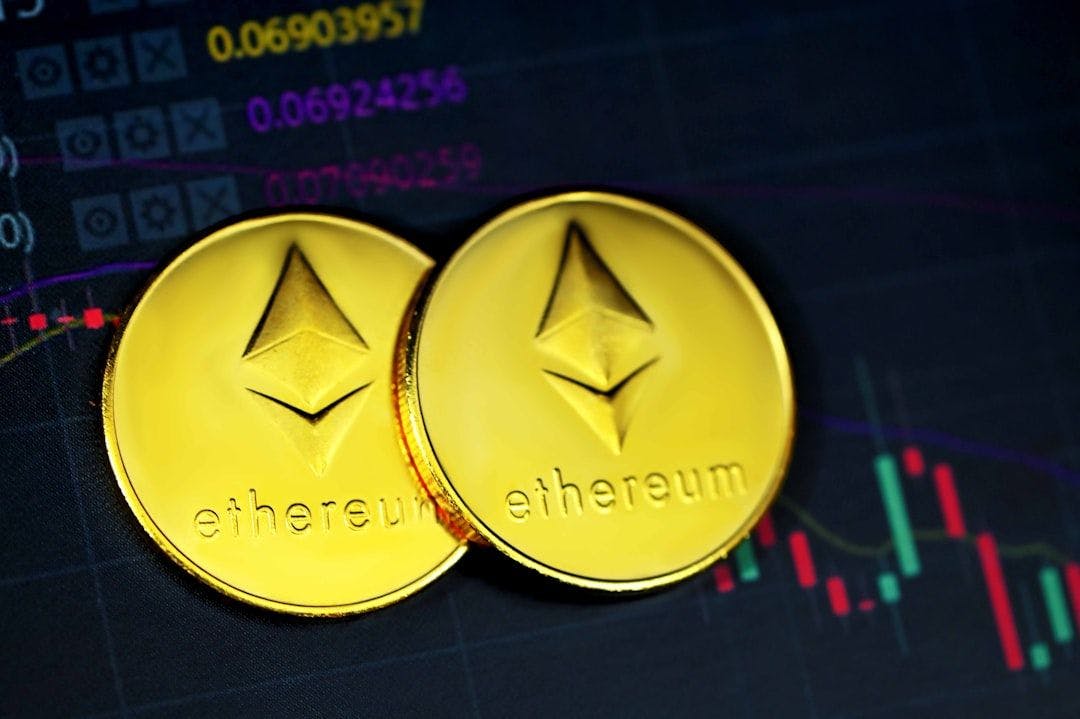Over the past three years, Ethereum has tested the patience of even its most loyal holders. While Bitcoin and Solana were busy setting new records, ETH often trailed behind—enough to make even the most committed rethink their strategy.
Editor’s note: This article is for informational purposes only and does not constitute investment advice. Cryptocurrencies are speculative, complex, and involve high risks. This can mean high prices volatility and potential loss of your initial investment. You should consider your financial situation, investment purposes, and consult with a financial advisor before making any investment decisions. The HackerNoon editorial team has only verified the story for grammatical accuracy and does not endorse or guarantee the accuracy, reliability, or completeness of the information stated in this article. #DYOR
I’ll be honest: I didn’t see it coming when ETH slipped below my average entry point this April. My portfolio was down 25–30%, while Bitcoin had climbed 4–5x in the same window. The “just sell it and move on” temptation was real. But while the mood online turned into a full-on capitulation parade, I tuned out the noise, doubled down, and bought ETH at $1,440 and $1,675.
Fast forward, and Ethereum’s price has tripled, reaching over $4600 at the writing time. More importantly, it proved a point I’ll carry forward: in moments of maximum fear, the charts are often the least important thing in the room—fundamentals are where the truth hides.
So, if you missed the memo and the rally, here’s my breakdown of one of the hottest topics in the ETH space right now: what’s actually pushing Ethereum upward, which metrics matter, and where its real value comes from.*
*not from an “investor point of view (I’m no such thing)—more from the perspective of someone building and contributing inside the Ethereum ecosystem.
Ethereum as an Asset
The past month has been a turning point for Ethereum in the institutional arena. Now, it wouldn’t be an overstatement to say that ETH is increasingly viewed as a bona fide financial asset.
In July alone, more than 10 publicly traded companies announced the creation and funding of Ethereum treasuries. And according to my own sources, roughly another 10 ETH-focused funds are set to launch this month, with some founders already planning purchases exceeding $1 billion.
The purchase rally began with Consensys (MetaMask), the company founded by Ethereum co-creator Joseph Lubin, which
The move quickly caught the attention of Wall Street heavyweights. Tom Lee, a well-known market veteran and outspoken Ethereum supporter on CNBC, transformed his BitMine Immersion BTC mining firm into the world’s largest ETH treasury. By July 31, the company held 625,000 ETH (over $2.4B), while
The second-largest holder is SharpLinkGaming (SBET), where Lubin also serves as board chair. Through July and August, their ETH reserves rose to nearly 600,000 ETH ($2.8B), with
Apart from Tom Lee, other Bitcoin miners are also making the switch. Cases in point:
However, that’s not all!
- In July, Ether Machine (DYNX)
acquired 15,000 ETH at an average price of $3,809, becoming the third-largest ETH fund with 345,400 tokens ($1.6B). - GameSquare Holdings with streamer Ninja on its board
added 10,170 ETH (~$38M) in July,bringing total reserves to $73M. - Dynamix is
preparing to merge into a new entity under the Ether Machine name, aiming to control more than 400,000 ETH ($1.5B). - Meanwhile, ETHStrategy, which has emerged as a decentralized counterpart to Michael Saylor’s MicroStrategy,
started July with 6,900 ETH and now holds 12,300 tokens (~$57.7M).
BlackRock has even
Why does this matter for ETH price action? Because these players aren’t here for quick flips—they’re buying with 10-plus year horizons and aren’t swayed by short-term volatility.
In short, we’re witnessing Ethereum’s transformation into a global financial instrument—one that’s now positioned to attract billions of dollars in fresh liquidity.
So, Does Ethereum Still Matter as a Network ?
If anything, the opposite is true: Ethereum has cemented itself as the primary blockchain for big money. And here’s why…
Indeed, in
Since the start of the year, Ethereum L1 has seen more than $15.4B in stablecoin inflows. That’s less than Tron’s $22B, but triple Solana’s $5.5B. On a yearly basis, Ethereum’s lead is even more decisive: $48B in stablecoins vs. $24B for Tron and just $7.4B for Solana.
Why does this matter? Because stablecoins have become the primary entry point for institutional players. They’re used heavily by payment giants and banks—the same institutions now exploring their own Ethereum-based stablecoins.
For instance, Bank of America’s official reports explicitly
Regulation is also working in Ethereum’s favor. The U.S. recently passed
It’s also worth noting Ethereum’s dominance in the RWA (real-world assets) sector, where it
In a nutshell: stablecoins and asset tokenization are the two key drivers of the network’s value. Judging by recent trends, Ethereum L1 is positioned to become the “central bank” of the digital economy, because it’s the only blockchain capable of securely hosting trillions of dollars in capital.
Before long, other chains will either integrate as L2 networks on Ethereum or fade into irrelevance. For global corporations, it simply doesn’t make sense to build complex financial architectures on less secure networks, when Ethereum offers the scale, security, and credibility they need.
This article is not financial advice. Do Your Own Research.
To better understand Ethereum’s dynamics and trends for myself, I rely on open analytical resources rather than guesswork. Here’s a shortlist of dashboards and metrics I track regularly:
Total Ethereum ecosystem metrics Active developers in the ecosystem Number of active archive nodes ,Etherscan Node Tracker Total ecosystem TVL TVS (Total Value Secured) L2 TPS (Transactions per second) Stablecoins net inflow/outflow Total net value inflow/outflow Tokenized real-world assets Strategic Ethereum reserve Transaction fees on L1/L2s ,Gas fees Staking entry/exit queue Rollup stages 0/1/2 Blob fees (Data Availability) ETH ETF Flow ETH burned


